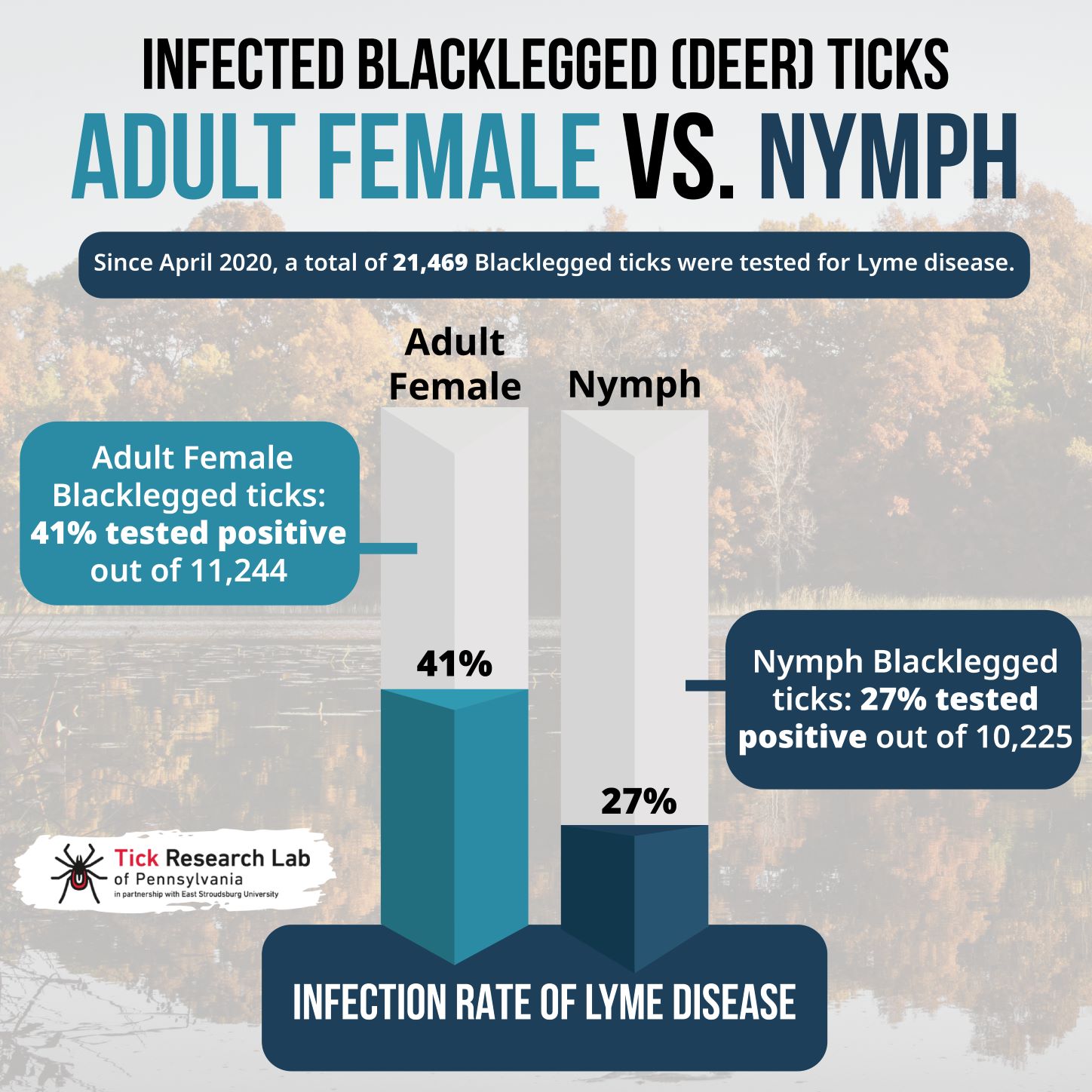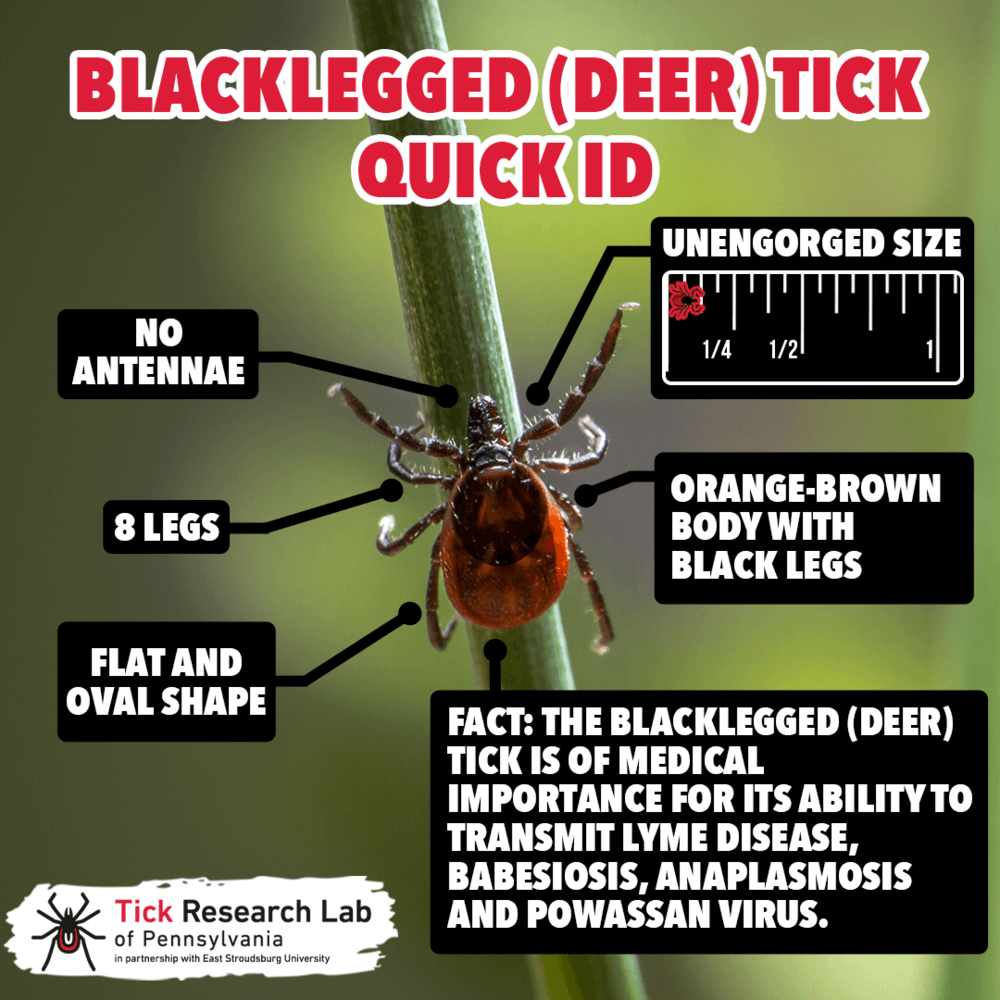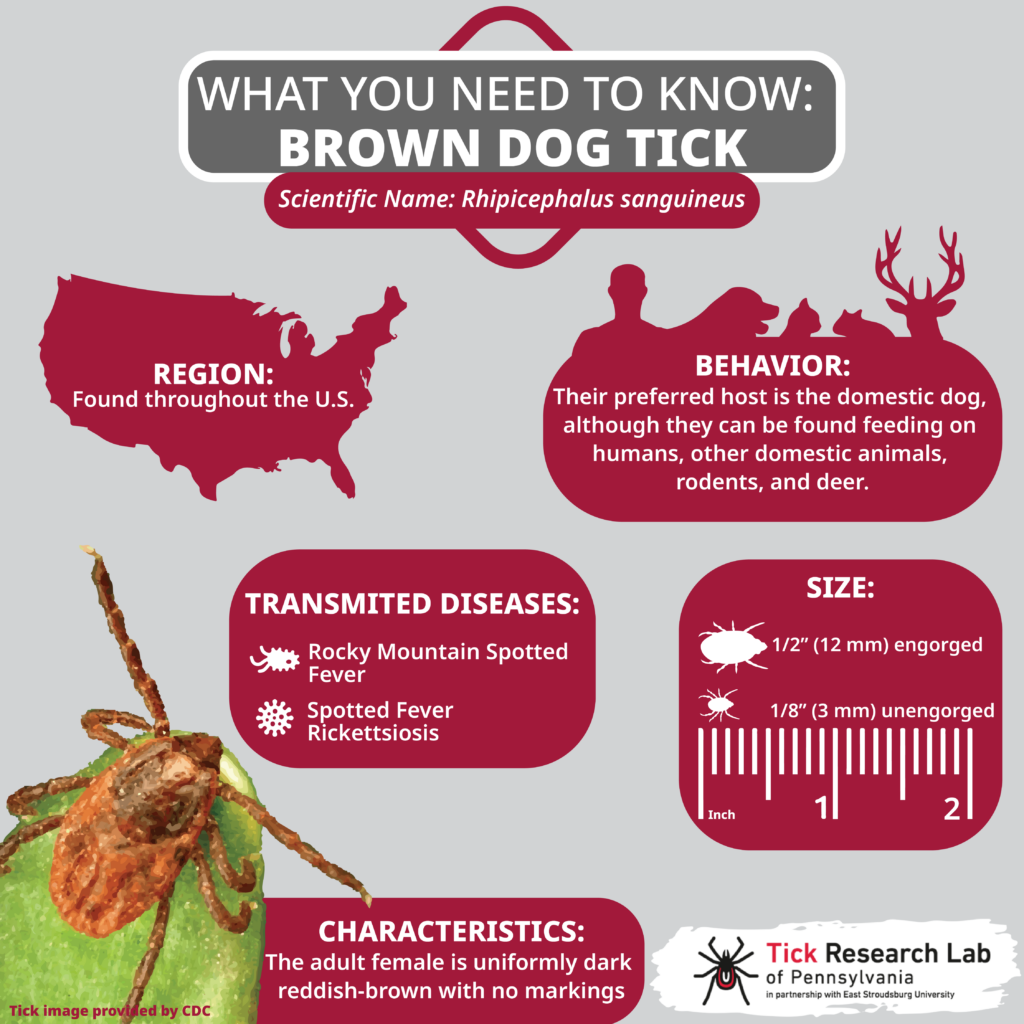If you thought tick season was over, think again! Fall and winter are high-risk seasons for tick bites, the spread of tick-borne diseases, and tick infestations, especially in the Northeast.
BLACKLEGGED (DEER) TICK –
Scientific Name – Ixodes scapularis
The tick’s ability to survive through inclement weather has been one of the keys to its proliferation over the years. One mistake many people All nymph Blacklegged (deer) ticks that received their full blood meal during the spring and summer have now entered their adult life stage this fall. Adult Blacklegged (deer) ticks are most active in the fall and can stay active through winter if the temperatures are above freezing.
When it comes to infection rates, adult female Blacklegged (deer) ticks are more dangerous than nymph Blacklegged (deer) ticks and other species of ticks. Nymphs are risky due to their size, but adults have a greater chance of carrying one or more tick-borne diseases. A Blacklegged (deer) tick will feed on a single host at its larva and nymph stages and can pick up several tick-borne diseases from each host. And so as an adult tick, it has already had two opportunities to take a blood meal, thus two opportunities to become infected.

When the adult female Blacklegged ticks fully feed on their final host, they mate with an adult male tick and reproduce over winter. During the following spring, the adult female lays 2,000 to 4,000 eggs and will die shortly thereafter.
Our studies show adult Blacklegged (deer) ticks have a higher rate of carrying Borrelia burgdorferi (Lyme disease), compared to the nymphal life stage. Since April 2020, a total of 21,469 Blacklegged ticks were tested for Lyme disease. 41% of adult female Blacklegged ticks tested positive out of 11,244 and 27% nymph Blacklegged tested positive out of 10,225. Blacklegged (deer) ticks can also transmit anaplasmosis, babesiosis, a tick-borne relapsing fever (like Borrelia miyamoto), and the deer tick virus (Powassan virus Lineage II) if the tick is infected.
BROWN DOG TICK –
Scientific Name – Rhipicephalus sanguineus
The Brown Dog tick gets its common name from its reddish brown color, and because its primary host is domestic dogs. If it cannot find a dog nearby, this tick is likely to feed on other mammals including domestic animals and humans. Brown Dog ticks are found throughout the U.S. and Internationally.
Many tick species can be carried indoors on animals, but most cannot complete their entire life cycle indoors like this species can. The Brown Dog tick is well known for infesting a home and it can happen when just a few of these ticks are brought inside. The adult male Brown Dog tick will mate with the adult female while she is attached to a host. Once the adult female tick is fertilized and fully feeds a blood meal, it can lay up to 5,000 eggs. They typically lay their eggs near baseboards, windows and door surrounds, furniture, edges of rugs, and curtains. The first indication that homeowners have a problem is when they start noticing ticks crawling up the walls or on curtains.
The final thing worth noting is the effect of changing temperatures on tick populations. With warmer winter temperatures, ticks can survive through
Tips on how to avoid or get rid of ticks in your home:
– Conduct tick checks BEFORE you or your pets enter your home. This is very vital in preventing tick infestations.
– Vacuum like you mean it! Vacuum the surfaces of your home including carpets, armchairs, door and window frames and any other corners where ticks may hide.
– Invest in a specialized tick shampoo which can be purchased from your vet to bathe your pet. Also, speak with your vet about a tick prevention plan.
– Wash your pet’s bedding, towels, and blankets. Always use the maximum temperature to eliminate any tick larva.
– Spray insecticide outside your home (natural or chemical) or speak to a pest control professional.
The earlier the infestation is discovered and addressed, the easier it will be to eliminate. Tick checking and grooming dogs, particularly upon return from kennels or locations where other dogs are present, is the best way to detect infestations early.

References
https://entnemdept.ufl.edu/creatures/urban/medical/brown_dog_tick.htm


